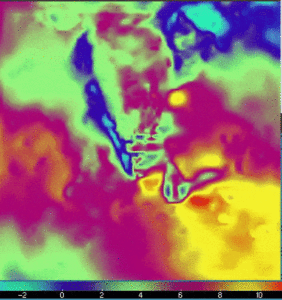Wind energy generation technologies require a reliable and stable supply of wind resources for generation purposes. High-quality wind resource assessments are inevitable, as they accelerate technology selection and deployment, making it the primary parameter for accurate analyses of the system’s performance.
Generally, the initial screening of sites is based on average wind speed conditions that ignore the daily, seasonal and annual variability. Averages do not provide the correct or the complete picture of resource availability, the profiles across the day/season or the year might vary significantly, which leads to uncertainties pertaining to the future financial viability of the project, technically impacting the selection of sites based on an average instead of a complete profile. The complete profile on the contrary, could lead to more informed investment decisions based on reliable generation and cash flow forecasts. Broadly, location parameters related to land use types, access to grids and proximity to load centers also add-on to these decisions, but the topmost priority is imminently given to the determination of adequate wind resources at the site proposed.
As weather patterns have also been extensively changing over the years, determination of reliable wind conditions amidst variability is highly recommended. Therefore, the temporal distribution of wind speed conditions becomes critical, especially during site selection procedures.
Furthermore, this estimation of the potential yields, among alternative sites on a daily/seasonal and annual basis is also beneficial for the selection of optimum energy conversion technologies and their subsequent design layouts on the sites, making high-quality resource assessments inevitable and the prime parameter for the accurate analyses of the system’s performance. Additively, even at the infancy stages of project development, such information is paramount for project developers to compute the costs involved in establishing and operating power generation projects and accordingly procure financing from various sources based on their expected revenue.
Ground weather data from ground based meteorological stations are the best for such purposes but only relevant on a limited area around its location and cannot be applied to all other areas not in their vicinity. While it is also not a feasible option to install one’s own monitoring stations at every location and wait for 1-2 years to generate the meteorological data to make such analyses, because fast execution requires a good resolution estimation, rather “immediately” to take the site selection analyses to the next steps. Moreover, where ever such stations are available, the generated ground based metrological information are seldom available in the public domain e.g. IMD stations in India.
We propose a tool based on advanced modelling techniques i.e. numerical weather prediction (NWP) models, with higher degree of accuracy at a higher spatial resolution and longer temporal levels. The technique allows the development of such information through satellite-derived time series meteorological parameter measurements i.e. wind speed measurements.
Further, these modeled sets of information are validated by ground measurements i.e. meteorological stations; on or near the selected site, to essentially lower the estimated yield risk, thereby, diminishing the ambiguity associated with the estimated revenue stream at that site.
 Hourly Wind Conditions Over Peninsular India
Hourly Wind Conditions Over Peninsular India
(Duration: 8hrs; Unit: m/s)
Additionally, these measurements are also essential in the later stages of the energy development project (energy policy decisions, engineering designs, and system deployment considerations), from the view point of estimating real-time plant output to assure high efficiency of the plant throughout its service life.
Summarizing, the measurements of wind speed conditions made at ground based meteorological stations are temporally and spatially scattered and scarce, moreover expensive to maintain with ad-hoc quality checks. At WhereSciences GeoSpatial Labs Energy we strive to perform an accurate evaluation of the weather models’ predictions, validating them against the ground-based measurements (where ever available), taking utmost care that these measurements are highly accurate and follow best practices for collection, operation, maintenance, and quality assurances, ultimately facilitating prudent forecasts.
Last Updated: February 15, 2020







